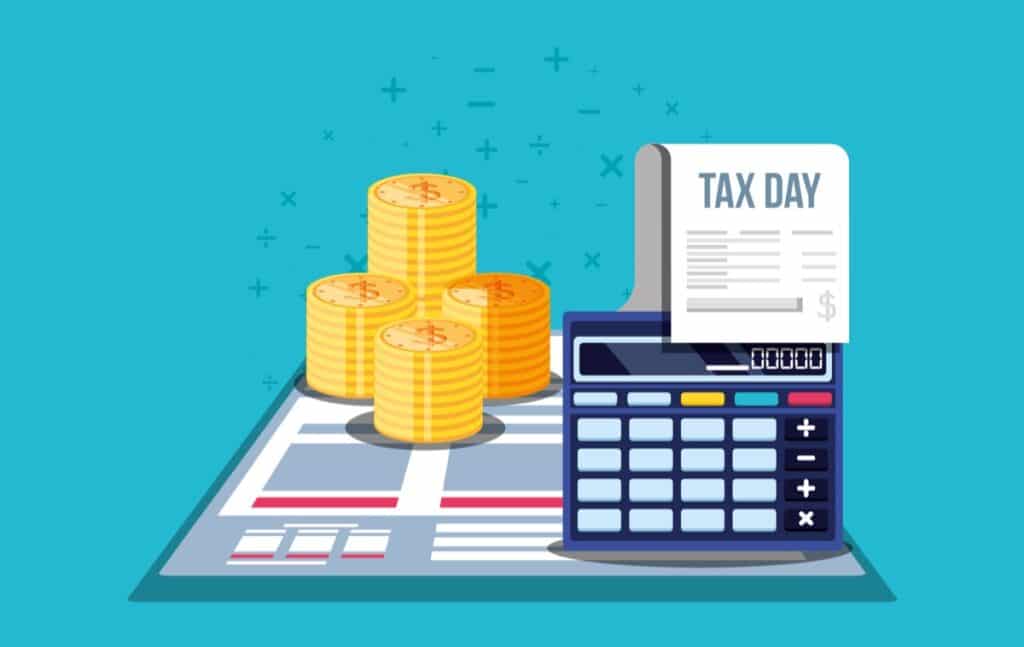Taxes. Right through our life, taxes always follow us around. It’s one of those things that nobody gets a pass at, not even the people dealing in cryptocurrency. Although many crypto traders were under the notion that digital currency couldn’t be taxed, governments have started issuing guidelines based on how to declare your cryptocurrency and how to make it reflect on your overall tax report.
In March 2014, the Internal Revenue Service (IRS) stated that all cryptocurrency was to be treated as property. By viewing cryptocurrencies as capital assets, all purchases made with them (stocks, bonds, investment properties, etc.) are liable for taxation.
A capital gain is when crypto traders purchase cryptocurrency, hold it over a certain period and later sell it for profit, a capital loss is when the currency is sold for a lower cost.
Contents
How to Calculate Crypto Taxes for Gains or Losses
Based on your transaction history, you may have crypto gains and losses. Some of the activities where these occur will be when trading and selling of cryptocurrency, when exchanging one cryptocurrency for another, or when cryptocurrency is used as a payment for goods or services.
To check for a capital gain
- Multiply the selling price of your bitcoin (cryptocurrency) by how much of the bitcoin you sold.
- Subtract the amount from the price the bitcoin was purchased for.
- You will get what is known as a realized gain (profit after selling)
Capital gains on cryptocurrency transactions will be taxed according to the duration for which they are held. If the cryptocurrency is held for a period of less than 1 year it will be taxed as short-term capital gains which fall under the regular income tax rates.
In case the cryptocurrency is held for a period longer than 1 year any gains will be considered long-term capital gains and will be taxed accordingly. Long-term capital gains attract lower tax rates.
To check for a capital loss
- Multiply the selling price of your bitcoin by how much of the bitcoin you sold.
- Subtract the amount from the price the bitcoin was purchased for initially.
- You will get what is known as a capital loss.
If you sold bitcoins at a lower rate than what you purchased them for, you can claim it as a capital loss. The government has a scheme in place that allows you to use your capital losses to offset your taxable capital gains, but the maximum deduction amount each year is $3000.
To check for a short-term or long-term gain
- Check the date on which the bitcoins were purchased.
- And compare it with the current date.
- Calculate the duration of the holding period.
Apart from that, gains are calculated if:
- You have held the cryptocurrency for 1 year or less. (short-term gain)
- You have held the cryptocurrency for longer than 1 year. (long term gain)
Ultimately, your tax rate depends on the type of gains realized.
To check the nature of the capital gain or loss
If you have a short-term capital gain, the IRS will recognize your realized gains as ordinary income depending on your federal income tax bracket. Airdrops, Initial Coin Offerings (ICO), Bitcoin mining, and other ways of receiving payments are all taxed under income. When mining digital currency, it will be taxed as self-employed income.
If you have a long-term gain, you will have to pay a capital gains tax on your cryptocurrency profit. The government encourages crypto traders to hold onto their investments for longer time periods by offering lower tax incentives. There are 3 tax brackets for long-term capital gains, 0%, 15%, and 20% respectively.
Types of Crypto Tax Calculators
For crypto traders who trade in large sums and have a large flow of crypto transactions, it is important to start considering the use of specific cryptocurrency tax software that calculates crypto taxes for you.
Many of them have additional features that can add to your crypto trading portfolio. With these calculators, the margin of error is significantly reduced and tax day will never be missed.
1. ZenLedger
ZenLedger is much more than a crypto tax calculator. They handle the tediousness and complexity of calculating your crypto taxes and provide you with money-saving tools along the way. It automatically populates your tax forms and audit reports which can be sent to your Certified Public Accountant (CPA).
ZenLedger uses several steps to calculate taxes and file reports for the following.
- The trader’s capital gains and losses.
- The trader’s capital gains tax rate.
- Cost basis and accounting method.
- Harvesting losses.
- Foreign currency reporting.
As you go in-depth, you start to see the meticulous record-keeping necessary for each transaction, and the rules for calculating crypto taxes change depending on certain factors.
An automated solution, ZenLedger calculates each transaction from every exchange platform you use and every digital wallet evaluates and analyses for money-saving patterns accordingly in a matter of minutes.
2. myCryptoTaxCalculator
myCryptoTaxCalculator automatically categorizes your crypto transaction history and studies your crypto activities to learn from your input. They have support for ICOs, counter, airdrops, mining rewards, lost or stolen crypto funds, crypto payments, and from 65 major exchanges.
It was built using an AI technique called inferential logic which means, the application gets more intelligent as you use it. When it comes to security, Google authentication and Cloud services are used.
myCryptoTaxCalculator breaks down your transaction history using a method known as double-entry accounting. This lets you see each capital gains event, line by line, and is also included in the final report summary.
Currency breaks down, cost of trade, fees if applicable, gross and net gains, long-term gains, and the balance left after a trade. The report can be downloaded in CSV file format so that it can be shared with your accountants for further inspection or stored for compliance.
3. CoinBase
Cryptocurrency exchange Coinbase has recently launched a new capital gain or loss calculator. This tool was added as part of an effort to aid its crypto user base to keep up with tax requirements. The calculator can generate a report which outlines their capital gains or losses using the first-in-first-out (FIFO) accounting method.
However, this calculator is primarily aimed at users who have purchased and sold on Coinbase exclusively. CoinBase does not recommend the calculator for crypto traders who have purchased digital assets from somewhere else such as, from ICOs.








